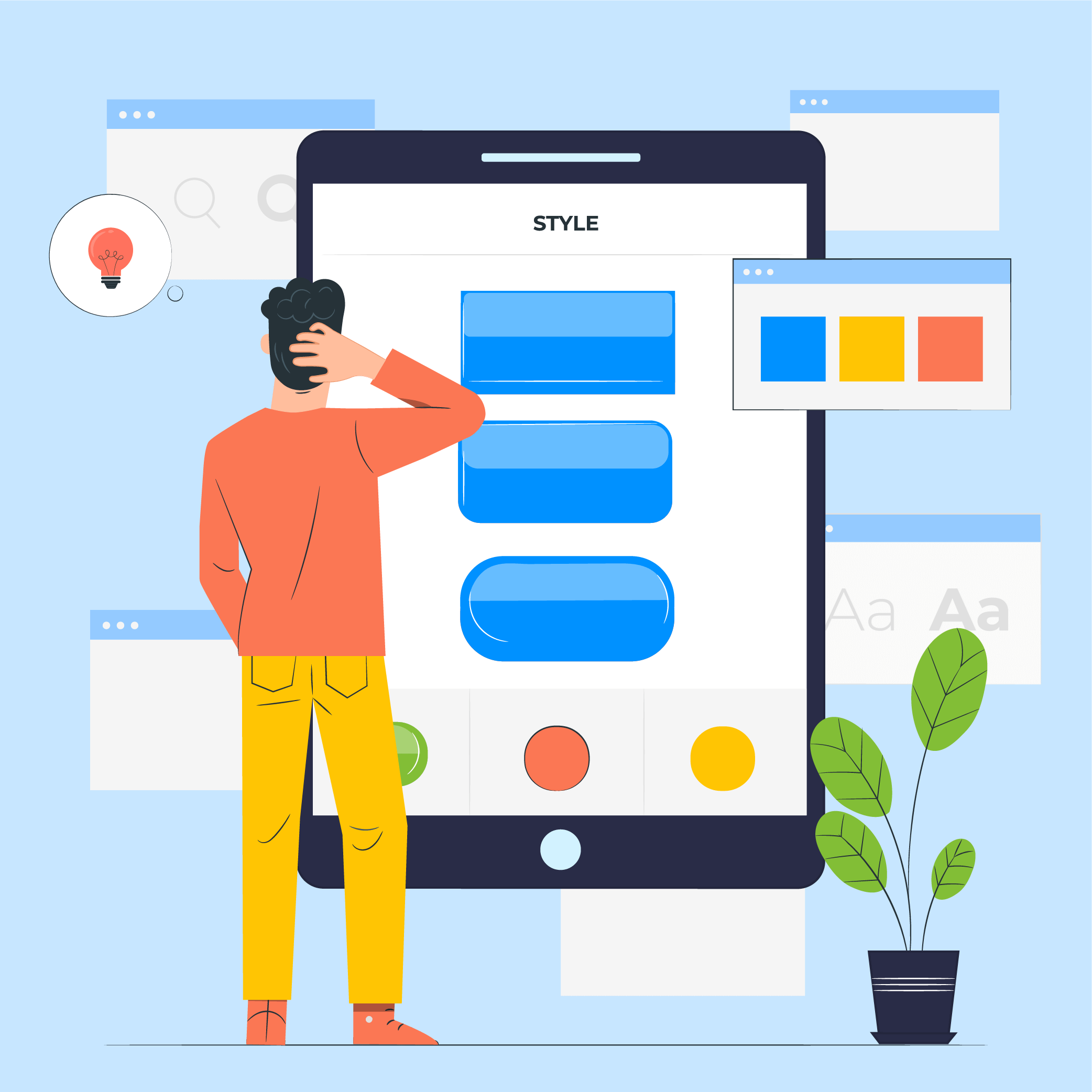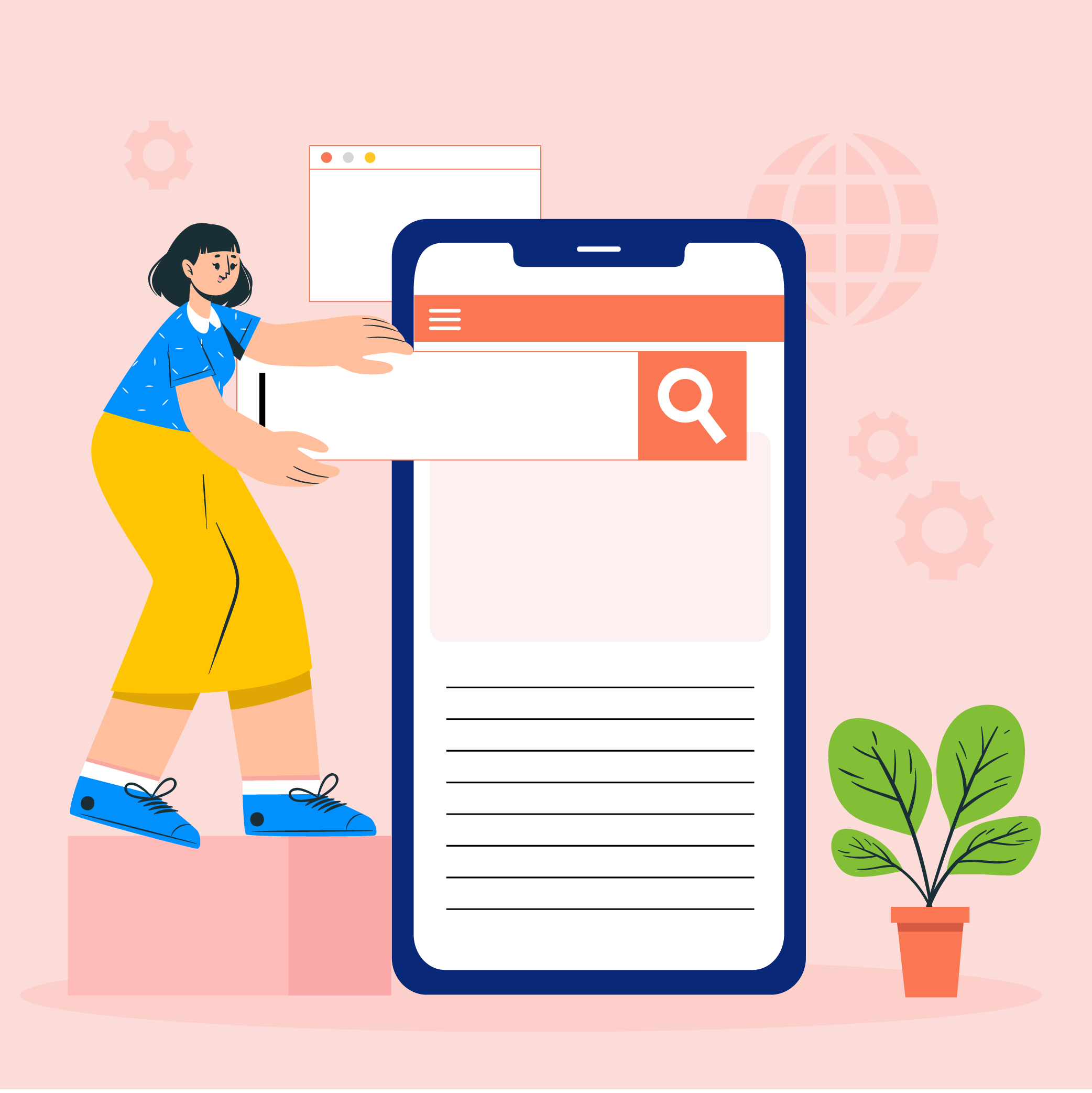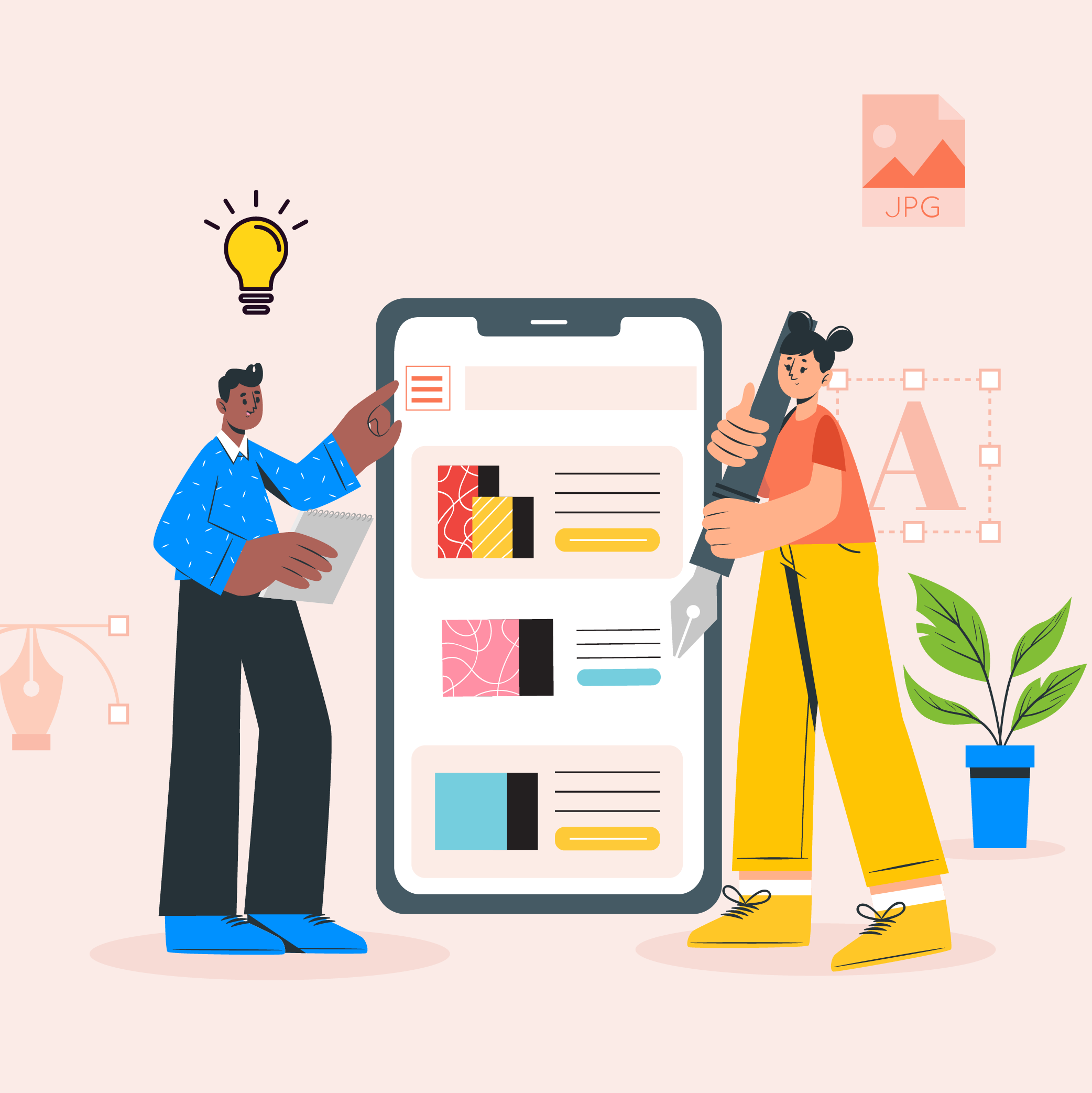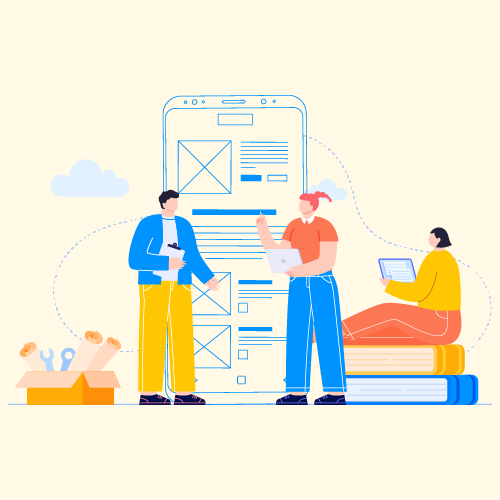- What Is Product Design?
- Product Orientation
- What Is Product Design Strategy?
- The Other Facets Of Design: UX Vs UI Design
- User Experience Design
- User Interface Design
- Product Designer Vs UX Designer
- Role Of A Product Designer In Each Phase Of App Development
- Discovery Phase -
- Development Phase
- Heuristic Evaluation
- Delivery
- Post-release phase
- Future of Product Design
- Conclusion
The role of a Product Designer in app development has evolved over the years and the scope of their work has grown dramatically. In this rapidly changing digital world, with more advanced projects coming up, the need and engagement that a product demands is ever-growing.
For a holistic, UX driven development, extending the engagement of UX Designers in all spheres concerning the product is a mandate. And that’s exactly where the need for Product Designer stems from.
According to a report by The Bureau of Labour Statistics, Michigan, California and New York have the highest employment for Product Designers and witnessed new opportunities and prospects. The overall job growth rate for Product Designers is about 4%, through the year 2022.
There are User Experience Designers, User Interface Designers, Interaction Designers, Graphic Designers, and each one of these disciplines comes with a separate set of roles and responsibilities.
The role of a Product Designer is gaining momentum because they handle the end to end design of a product. They not only drive the project but influence all design-related product decisions, big or small.
Product Designers decide the look and feel of a digital product. They get hold of what customers truly want, to build products that are widely successful.
The role of a Product Designer in app development is a fundamental one. Their sole responsibility is not to craft appealing designs or oversee the aesthetics but take charge of the overall design process and the success of the product.
This article delves deep into the role of a product designer in app development and details how they bring meaningful products to life.
What Is Product Design?
Product Design is a holistic approach to creating products by combining target audience needs and business goals. The role of Product Designer in app development is not only user-centric but also business-oriented.
Product Design is at the intersection of various design principles which encompasses UI Design, User Research, Information Architecture, Design Thinking, and Visual Design. It is about analyzing how a new product ties in with market needs and user preferences.
Product Designer role and responsibility is to be a generalist. They identify new opportunities for a product. The need to be analytic and research-oriented is growing to make informed design decisions.

Product Orientation
Previously, Designers took user and business requirements from Product Managers. Now, since the scope of work and the role of Product Designer in app development has evolved over the time, they work closely with Product Managers, Engineers, and cross-functional teams throughout the app development lifecycle.
Product Designers are not just responsible for the design but the overall success of the product. They seamlessly integrate functionality and experience to offer value to the end-user.
What Is Product Design Strategy?
Well, Product Design isn’t about creating a user-friendly interface or an attractive and appealing app. A Product Design Strategy takes a holistic approach to app development and entails combining Design Thinking with an agile mindset.
It puts the user at the center stage- studying their needs and interests are paramount to build a product that not only users love but also accomplishes business goals.
Product Design Strategy is about striking the right balance between user needs and business goals and not losing sight of either one during the app development lifecycle.
Also Read: How to Deploy AI to Enhance Product Design

The Other Facets Of Design: UX Vs UI Design
The Product Design framework encompasses disciplines like UX Design, UI Design and Product Management. UI, UX Design is an integral part of the app development process.
User Experience Design
User Experience Design entails creating products and providing services which render a meaningful and delightful experience to the users. User Experience Design is a process, one that involves seamlessly integrating aspects of branding, usability, design, and functionality when building a product.
The aim of UX design is to study user behavior, understand user interests and motivations with the intent to offer engaging digital experiences after proper ux review. UX Design is about crafting experiences that are intuitive, visually stimulating and seamlessly guide users in accomplishing the desired action.
UX is essential for the success of a mobile app. It involves defining the what, why and how of a digital product.
User Interface Design
UI Design is about creating interfaces with emphasis on responsiveness, aesthetics, and usability to foster a great experience.
UI brings together purpose and aesthetic by combining Visual Design( the look and feel) with Interaction Design( how a product works). The focus is more on colours and typography.
User Interface Design improves the quality of user interactions and offers a visually appealing product to the customers. UI Designers dig deep and draft a visual language that the user understands. The focus always lies on enhancing usability and creating a splendid visual journey.
UX and UI are both vital elements of design. While UX makes an app usable, UI makes it visually appealing. While UI/UX Designers approach problems differently, a lot of emphasis lies on how to make an emotional connect between the user and the app.

Product Designer Vs UX Designer
Product Designers are experts in various disciplines of design. They always take business objectives and user needs into consideration. They are responsible for the functionality as well as the user experience of a product.
Product Designers role and responsibility is to have a holistic understanding of product design, including visual and experience design, and business acumen. They work closely with Product Managers and lead developers throughout the discovery, design, and development process to bring great ideas to life.
Whereas, UI/UX Designers focus on the target audience, study their behaviour and craft designs that meet user needs. They are solely responsible for the design phase and making customers happy by offering them a delightful experience.
Role Of A Product Designer In Each Phase Of App Development
A Product Designer plays a series of roles in an app development company. They are responsible for the digital product design process. During the pre-discovery phase, they capture the product vision and ensure that their end designs will meet client and user expectations.

Discovery Phase –
Projects usually commence with a Discovery Phase. A Product Design Sprint is a great way to build a functionally designed prototype in a span of few days and validate assumptions with real users.
During the discovery phase, Product Designers conduct detailed user research. This process entails analyzing user and business requirements and generating requirement based solutions to tackle design challenges.
1. Research
Using qualitative and quantitative research methods such as User Interviews, usability testing, and data and analytics helps in making informed decisions on how to provide value to the customers.
A Product Designer conducts User Interviews which helps in identifying and analyzing user needs and determining goals. This is followed by User Persona Creation and journey mapping.
User Persona
Creating User Personas is an ideal approach to understand user habits, behaviour patterns, and pain points. Personas include all the essential details about the user, which makes communicating insights regarding the target audience to the multidisciplinary teams an easy task.
User Personas help a great deal in strategizing, driving smart design decisions and narrowing down a design solution.
Moodboards

Mood boarding is a powerful tool to find ideas and inspiration. Design mood captures the right mood and style of the product and helps the Product Designer characterize interface elements.
Creating a mood board helps ascertain the right colour palette, fonts, style and helps determine the visual vibe of the product.
User Journey Mapping
By mapping the user flow, A Product Designer defines the entire user experience. Through journey mapping, they establish the user flow in an app- right from when a user discovers an app till the end task is accomplished. It maps out the entire journey and outlines any design flaws or loopholes that require immediate attention.

2. Product Planning
During the product planning phase, a Product Designer provides insights regarding user behaviour and works closely with key stakeholders and product owners to plan out the core product features.
Wireframing
Wireframes outlines the layout of a product and plays a fundamental role in structuring the product early on.
Product Designers target usability and efficiency while demonstrating how interface elements will appear. By creating wireframes in Invision and Adobe XD, you can rapidly generate feedback and make pertinent changes according to the client’s unique requirements.
Making wireframes brings usability to the center stage. It fleshes out the skeleton and provides due clarity to the cross-functional teams on functionality and navigation. Building wireframes is an optimum and fast method to generate feedback and iterate accordingly.

Development Phase
In this phase, Product Designers are concentrated on the Visual Design of the product. In-depth user research and analysis, creating persona and journey mapping, mood boarding and wireframing – all the research and product planning aspects come together in order to develop a cutting edge app with stellar design.
Prototyping
A high-fidelity clickable prototype is a visual representation of the end design. It emulates not only the key functionality but also defines the look and feel of the product. Through rapid prototyping, Product Designer capture insights on user interaction.
Rapid prototyping is a great method to highlight any flaws and resolve usability issues before launch.
A Product Designer is involved in all stages of app development. Even after creating designs, they play an active role in development, delivery, and post- support.
Heuristic Evaluation
Heuristic Evaluation is conducted to test whether a product is user-friendly. This crucial step helps in ascertaining a product’s usability.
Usability experts review a product on a set of predetermined guidelines. User control and freedom, error prevention, aesthetic and minimalist design are a few parameters that experts take into consideration
Through heuristic evaluation, Product Designers identify design flaws and make them addressable in an iterative process.
Delivery
During the final stage, Product Designers ensure that the requirements and specifications are clear, understood and duly implemented.
Usability Testing
Before diving straight into the market, the product is tested with real-time users for factors like usability and accessibility. The approach of a Product Designer from the very start is user-centric. They observe how the user interacts with a product and what fascinates them to take action. User feedback and reaction is duly incorporated to build an even better product that is scalable.
Post-release phase
The job of a Product Designer doesn’t really end once the product is launched in the market. Sometimes, the UX is so complicated that users can’t navigate through an app with ease, while other times users don’t really use the app the way the user flow was predicted.
Incorporating simple designs or reworking on the app’s UX post-release is another responsibility of a Product Designer.
This can also be seen as the workflow and set of deliverables that a Product Designer has to offer right from discovery to post-launch.
Future of Product Design
It’s quite difficult to predict the future of product designers since disruptive technologies are changing the landscape and new design trends are gaining momentum. But AI will likely cast a huge impact on Product design in the coming years.
In the near future, Product Designers will leverage the power of AI to create prototypes and speed up the product design and conceptualization process.
With the help of AI, designers can now come up with an array of realistic prototypes that will allow them to build something incredible.
Conclusion
The possibilities with Product Design solutions in App Development are endless. What’s highly important is to build cross-functional teams and conduct creative sessions that are conducive for designers and developers to work hand in hand in order to change how we look at old products and bring revolutionary ideas to life.



11 Principles of UX Design From A Startup Perspective
When we hear the word design, we think of creativity or some creative role, in which an individual crafts and designs something beautiful. But, there is a thing with UX design that makes us understand that only aesthetically good designs won’t make for a usable interface. A good user designer makes great user research. When…

Intuitive Search Specs that Separate the Best from the Rest
Sometimes you hear people utter the phrase “I had an intuition” at which point you may wonder whether he/she has the ability to view the future. But that isn’t the case. Intuition is the feeling people derive based on instinct and this instinct isn’t based on conscious reasoning. This subliminal, cerebral concept holds immense significance…

15 Steps to Mobile App Redesign for Market Domination
App redesign is no joke. If you run a mobile-powered business then you are virtually on life-support while indulging in a UI UX overhaul. And if you do not realize that already, then there is all the more need for someone to point you in the right direction. We assume you want a word by…















